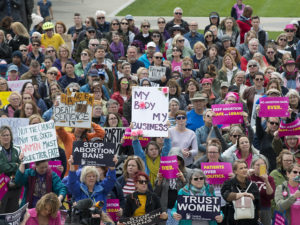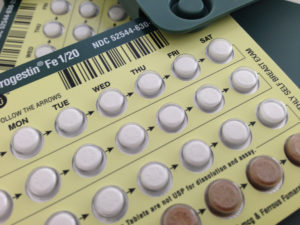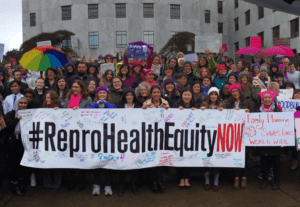Birth Control Is Back
The U.S. continues to have the highest teen pregnancy rate in the industrialized world, despite this week's reports of doubled sales of the controversial over-the-counter birth control method Plan B, otherwise known as "the morning-after pill." So why does Washington continue to push abstinence-only sex education against all better scientific judgments?Birth control is back. Not that it ever went away, despite the ardor with which conservative culture warriors have pushed their antediluvian attitudes about women and sex — and notwithstanding the official sanction the Bush administration has given this retro-think.
Barr Pharmaceuticals, maker of the Plan B morning-after contraceptive pill, estimates that sales doubled since the Food and Drug Administration approved over-the-counter sale of the product after a long, politically inspired delay. Opponents had argued that the pill is tantamount to abortion — which it is not. A woman takes the medication after unprotected sex, and it works like a high dose of birth control pills. Plan B brought in $40 million annually when it was available by prescription only, according to Barr spokeswoman Carol Cox. The company estimates that sales this year, which marked the start of marketing without a prescription to women 18 and older, will reach $80 million.
More teenagers who have sex, meanwhile, are using condoms — 63 percent used a condom during their last sexual intercourse, according to data compiled by the National Center for Health Statistics. That’s up from 46 percent of sexually active high school students who reported using condoms in 1991. Progress in reducing the rate of births to teenage mothers has held steady since the 1990s. So fewer girls are becoming mothers before they are emotionally and financially ready — and fewer babies are born burdened by the toxic mix of poverty and social stress related to teenage parenting.
It turns out that protecting ourselves against unwanted pregnancies never went out of style.
Not even after years in which anti-abortion activists tried to restrict women’s access to birth control with faith-based rhetoric that draws a link between abortion and contraception — though the only connection is that the failure to use birth control leads to more unwanted pregnancies and more abortions. Not even after the Bush administration’s unrelenting war on science, a crusade that includes showering unprecedented amounts of federal dollars on abstinence-only sex education. The programs have been found to have no effect in inspiring teenagers to delay having sex, have fewer sexual partners or abstain from sex altogether.
“I believe what’s happening in this country is, no longer are we listening to the vocal minority,” says Mary Jane Gallagher, president of the National Family Planning and Reproductive Health Association. “I think the taboo created by that vocal minority does not hold any water.”
Still, half of all pregnancies in the United States are unintended and half of those end in abortion. The U.S. rate of teen births is still the highest in the industrialized world — it’s about twice as high as the rate in Canada and about seven times higher than teen birthrates in such countries as Japan, Denmark and Sweden, according to the National Campaign to Prevent Teen Pregnancy. Nearly a third of American girls and young women will get pregnant at least once before they reach 20.
“The problem is that we’re acting like this isn’t a problem, and it certainly is,” says Jessica Sheets, a spokeswoman for the National Campaign to Prevent Teen Pregnancy.
Washington continues to promote what doesn’t work. A House appropriations panel recently approved a 25 percent hike in funding for abstinence-only sex education programs, despite a Democratic takeover of Congress that was supposed to bring some sanity — and science — back into the sex-ed discussion. Congressional leaders have said they included the increase to assure a smoother political course for a measure that also contains funding for a broad range of health, education and labor programs.
It was political expedience, not science, that led the FDA to approve the nonprescription sale of the morning-after pill only for adults. There’s no medical reason why sexually active teenage girls should not take it. And there’s every reason to think they would benefit most from it, since impulsive teens are more likely to have unprotected sex than are adults. “We are always on the side of protecting yourself,” says Sheets, who adds that the pregnancy campaign’s new interactive website for teenagers is likely to include information about the morning-after pill. “It’s 100 times better than getting pregnant at 14.”
Splitting the difference is the route to political compromise. But Solomon knew well he could not split the biblical baby in two. No middle ground that imposes ideology on medical science is fair to women and girls. Because after all, there’s no such thing as being half pregnant.
Marie Cocco’s e-mail address is mariecocco(at symbol)washpost.com.
(c) 2007, Washington Post Writers Group
Your support matters…Independent journalism is under threat and overshadowed by heavily funded mainstream media.
You can help level the playing field. Become a member.
Your tax-deductible contribution keeps us digging beneath the headlines to give you thought-provoking, investigative reporting and analysis that unearths what's really happening- without compromise.
Give today to support our courageous, independent journalists.






You need to be a supporter to comment.
There are currently no responses to this article.
Be the first to respond.